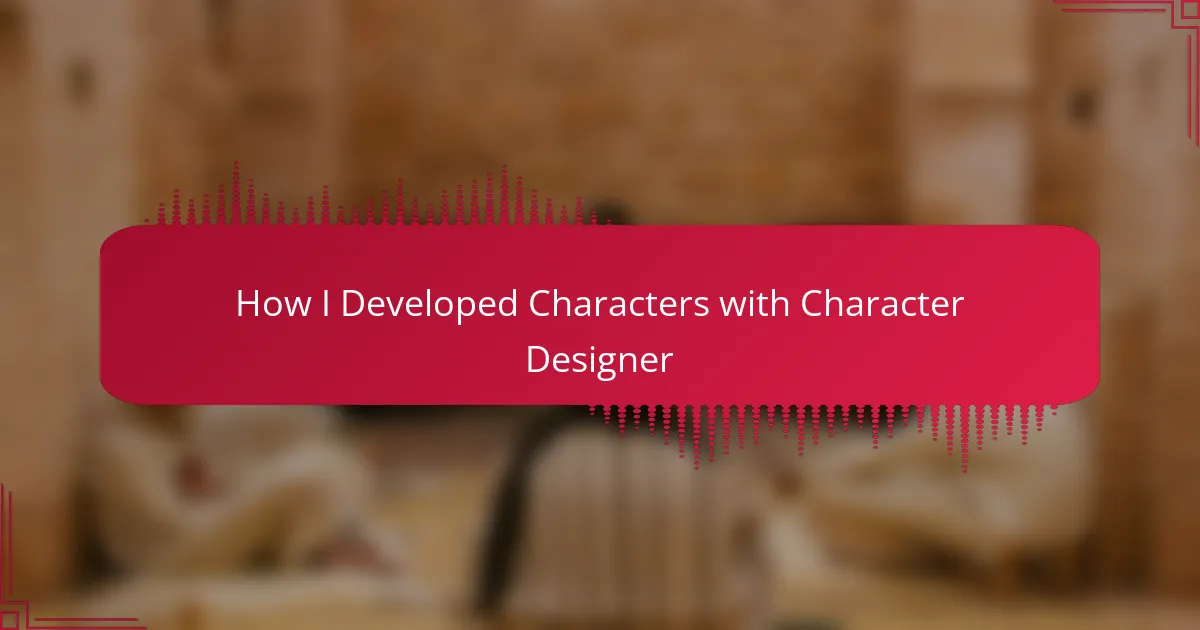Key takeaways
- Character design is crucial for storytelling, involving not just visuals but also backstory and personality to engage readers.
- Developing complex characters with depth and relatable flaws enhances emotional connections and creates compelling narratives.
- Utilizing tools like character design software allows for creativity and customization, helping to visualize characters effectively.
- Understanding character archetypes helps in crafting relatable figures while exploring unique traits deepens the reader’s emotional experience.
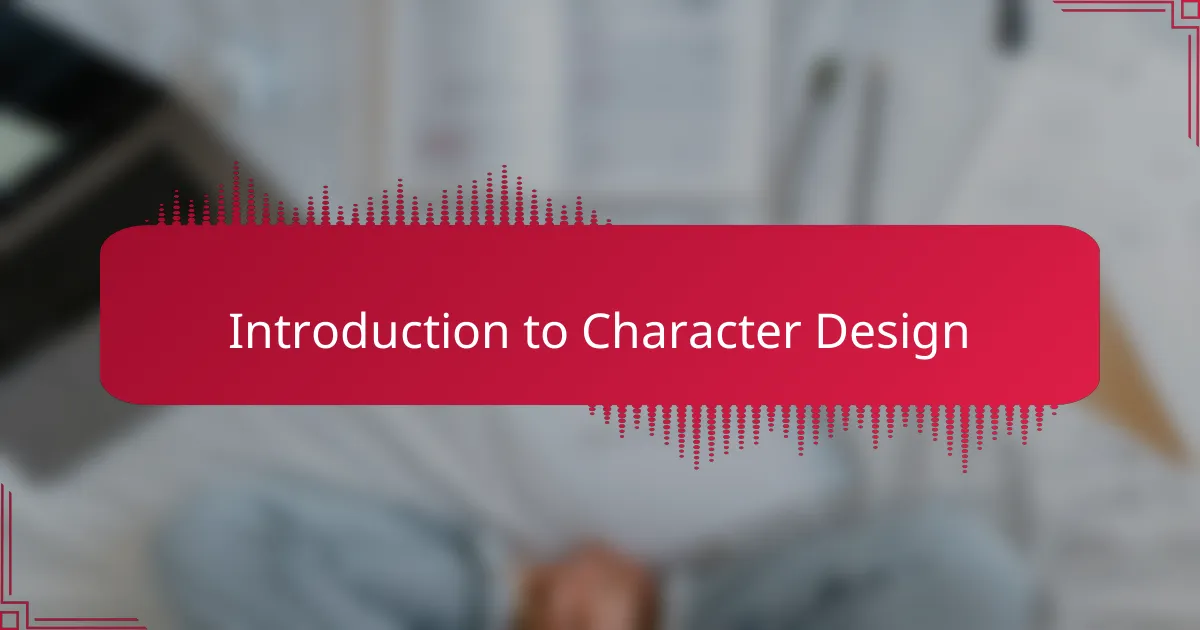
Introduction to Character Design
Character design is an essential foundation for any comic book, as it defines not only how your characters look but how they feel and resonate with your audience. When I first began my journey as a comic book author, I realized that creating compelling characters required more than just a unique visual; it involved crafting personalities that would draw readers into the story. I vividly remember the excitement of sketching my first character, feeling a mix of anxiety and joy as I attempted to give life to my ideas on paper.
In my experience, a well-thought-out character design can enhance storytelling significantly. It’s the nuances in their expressions, body language, and attire that can evoke emotions and convey deeper motivations. As I developed my characters using various tools and techniques, I found that these elements often shaped the narrative direction itself.
- Understand the character’s background: Think about their history and how it influences their personality.
- Define their goals and motivations: What drives them? What do they desire most?
- Experiment with visual elements: Use colors, shapes, and styles that reflect their traits.
- Create diverse expressions: Illustrate a range of emotions that align with their experiences.
- Incorporate feedback: Share designs with peers to gain fresh perspectives and improve your work.
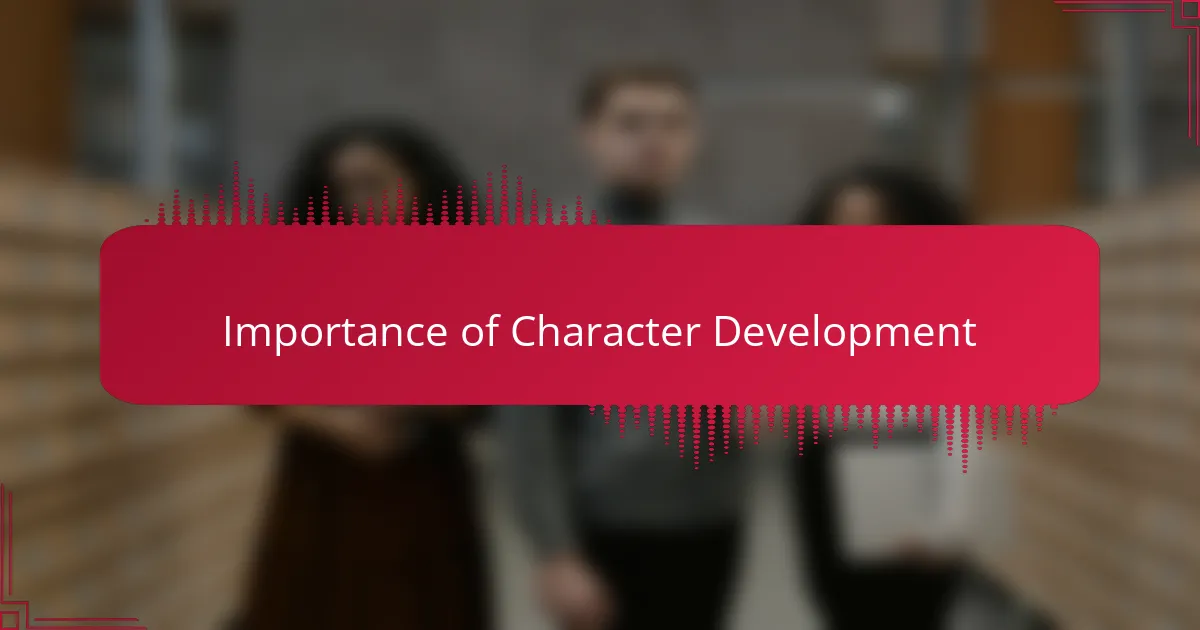
Importance of Character Development
Character development is crucial in storytelling because it creates relatable, memorable figures that resonate with readers. Personally, I’ve found that well-developed characters can evoke genuine emotions and drive the narrative. When readers connect with a character’s struggles and triumphs, it enhances their overall experience, making the story stick with them long after they’ve turned the last page.
When I started working on my characters, I realized that depth and complexity can transform a simple story into a compelling one. For instance, giving a character unique traits, backstories, and motivations helped me create a narrative that feels authentic and engaging. This connection not only enriches the plot but also keeps readers invested in the fate of the characters.
Here’s a simple comparison table showcasing the differences between flat and developed characters:
| Flat Characters | Developed Characters |
|---|---|
| One-dimensional | Complex and multifaceted |
| Lack backstory | Rich with history and motives |
| Predictable outcomes | Unpredictable and engaging arcs |
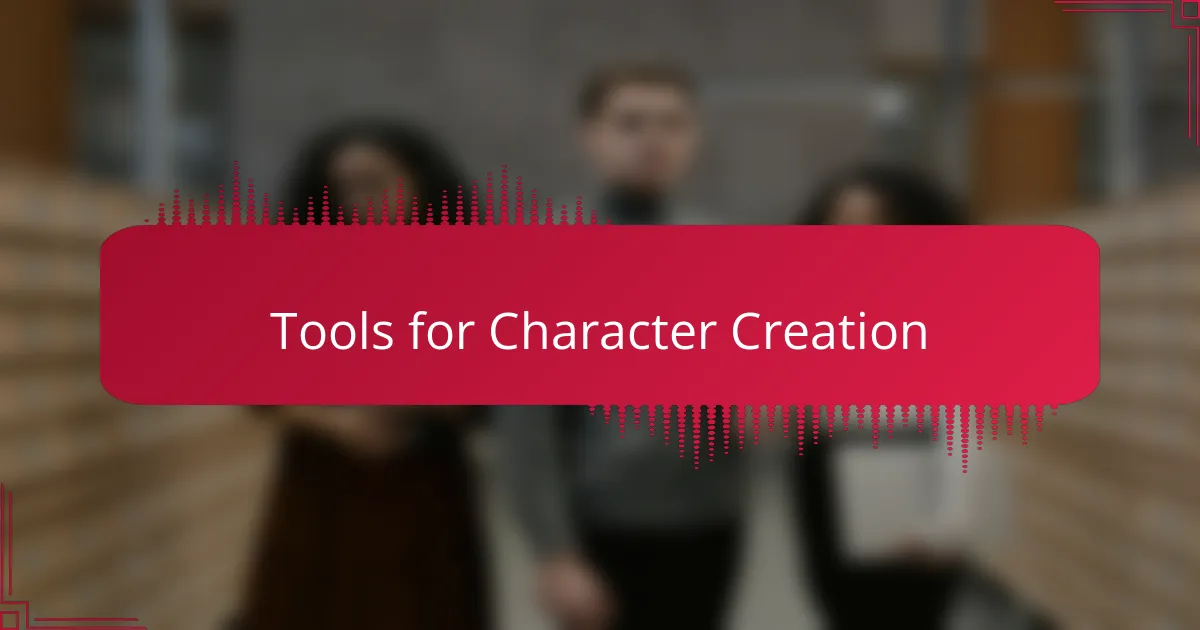
Tools for Character Creation
When it comes to character creation, I’ve found that having the right tools can make a world of difference. My experience with character design software has enhanced my ability to visualize and develop my characters in ways I never thought possible. For instance, I remember using Character Designer to flesh out my character’s backstory as I experimented with different visual styles. It was fascinating to see how a simple change in clothing or [censured] expression could really breathe life into a character.
The comparison of popular character creation tools highlights their unique features and allows you to choose what suits your creative process best. Personally, I appreciate how some tools prioritize ease of use, while others offer in-depth customization. Exploring these options can really empower you as a comic book author.
| Tool | Features |
|---|---|
| Character Designer | User-friendly interface, extensive customization options |
| Adobe Illustrator | Professional vector graphics, advanced editing tools |
| Procreate | Intuitive touch interface, realistic brushes |
| Clip Studio Paint | Built specifically for comics, frame-creation tools |
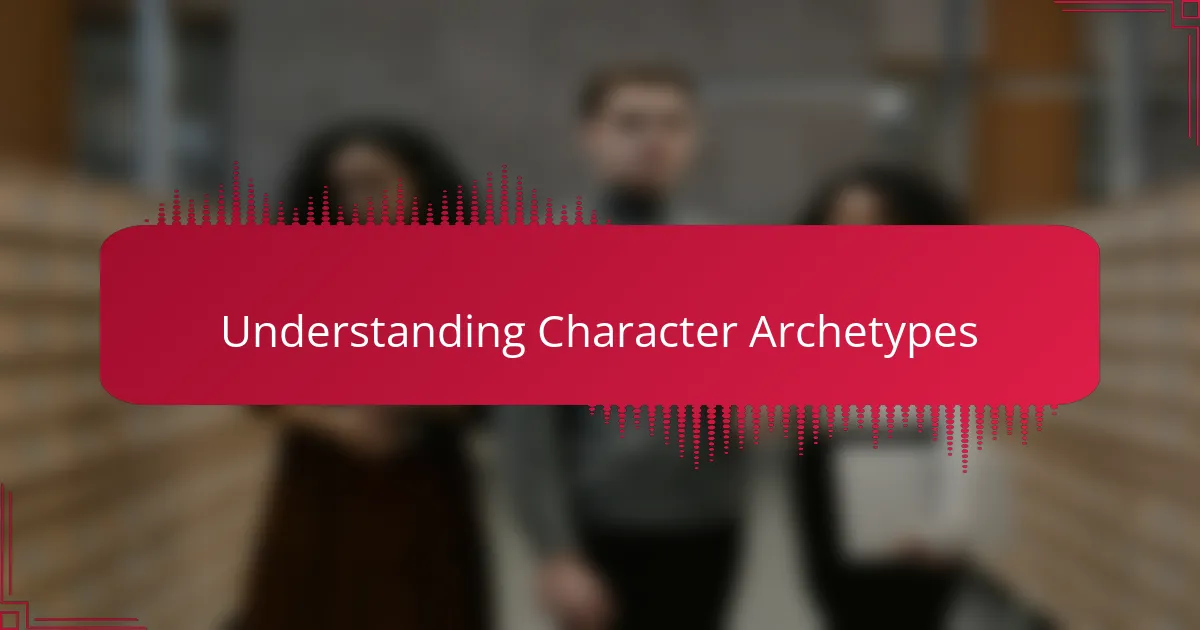
Understanding Character Archetypes
Character archetypes serve as the building blocks of storytelling. They provide a framework for creating relatable characters that resonate with the audience. For me, understanding these archetypes was like discovering a secret code that unlocked deeper connections in my writing.
When I first started crafting characters, I often found myself drawn to the same archetypes, unaware that each one carries its own emotional weight and narrative purpose. For example, the Hero embodies courage and resilience, while the Mentor offers wisdom and guidance. As I experimented with different archetypes, I noticed how they could influence not just the characters’ identities but also the dynamics within the story.
It’s fascinating how tapping into these archetypes can elicit specific emotions from readers. Whether it’s the familiar pining of the Lover or the rebellious spirit of the Rebel, each type can evoke a powerful response. My personal experience has shown me that a well-defined archetype, paired with unique traits, creates characters that stick with readers long after they’ve put down the comic.
| Archetype | Description |
|---|---|
| Hero | Brave and determined, faces challenges head-on. |
| Mentor | Wise figure providing knowledge and support. |
| Rebel | Challenger of norms, often seeking change or justice. |
| Lover | Drives connection and passion, often leads to conflict. |
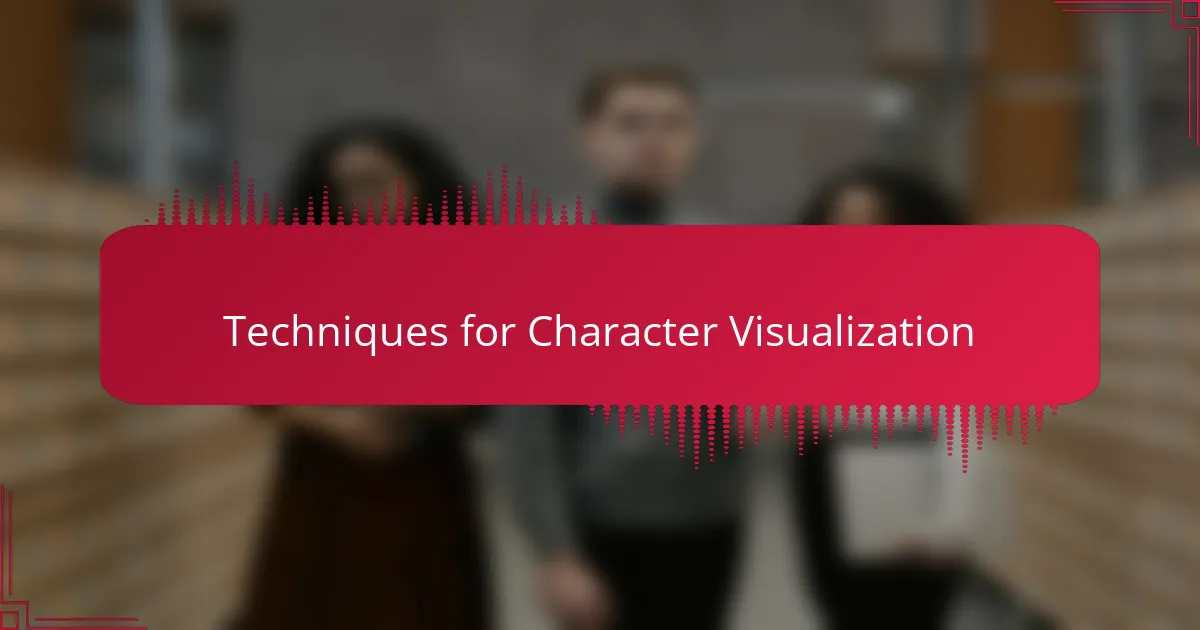
Techniques for Character Visualization
When it comes to character visualization, one technique I often rely on is sketching out a character’s silhouette first. This allows me to play with different shapes and sizes that reflect their personality. For instance, a strong, angular silhouette might represent a protector, while a softer, rounder shape could imply a nurturing character. Have you ever noticed how the silhouette of a character can impact your perception of them right away? I have, and it’s such an eye-opening experience.
Exploring color palettes is another enjoyable technique in my process. Colors can convey emotions and traits almost immediately. I remember when I was designing a character who was meant to be charismatic and ambitious; choosing vibrant reds and golds helped encapsulate that energy. The right colors can evoke feelings in readers before they even get to the character’s dialogue. How do colors speak to you when you’re visualizing your characters? It’s fascinating to consider how much storytelling can be informed simply by the hues we choose.
Lastly, I find that creating a mood board helps to solidify my vision. By gathering images, textures, and even quotes that resonate with the essence of my character, I’m able to construct a holistic view of their personality. This simple technique reminds me that every detail matters, from their fashion choices to their emotional struggles. Have you ever tried creating a mood board? It’s a powerful way to keep your character’s essence at the forefront of your creative process.
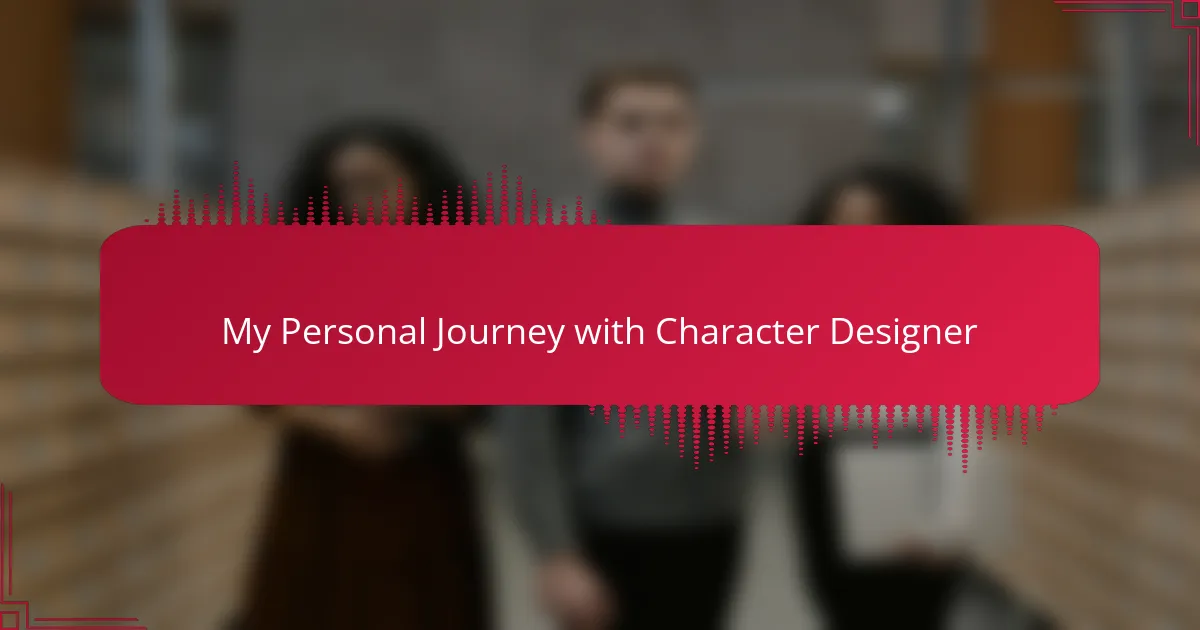
My Personal Journey with Character Designer
Throughout my journey as a comic book author, using a character designer became a game-changer for me. I vividly remember the first time I launched the program; there was a mix of excitement and apprehension. Seeing my characters come to life with distinct personalities and visual styles was exhilarating.
Over time, I discovered how character design could help enhance storytelling. I found that a well-developed character doesn’t just influence the narrative; they evoke emotions and connect with the audience deeply. Here’s what I learned during my time with a character designer:
- Visual Identity: Each character’s look should reflect their personality and backstory, making them unforgettable.
- Emotional Depth: Adding layers of traits, flaws, and desires can create relatable and realistic characters.
- Interactive Design: Experimenting with different styles and features allowed me to explore various aspects of a character’s identity.
- Consistency: Maintaining design elements throughout the comic was crucial for character recognition and reader engagement.
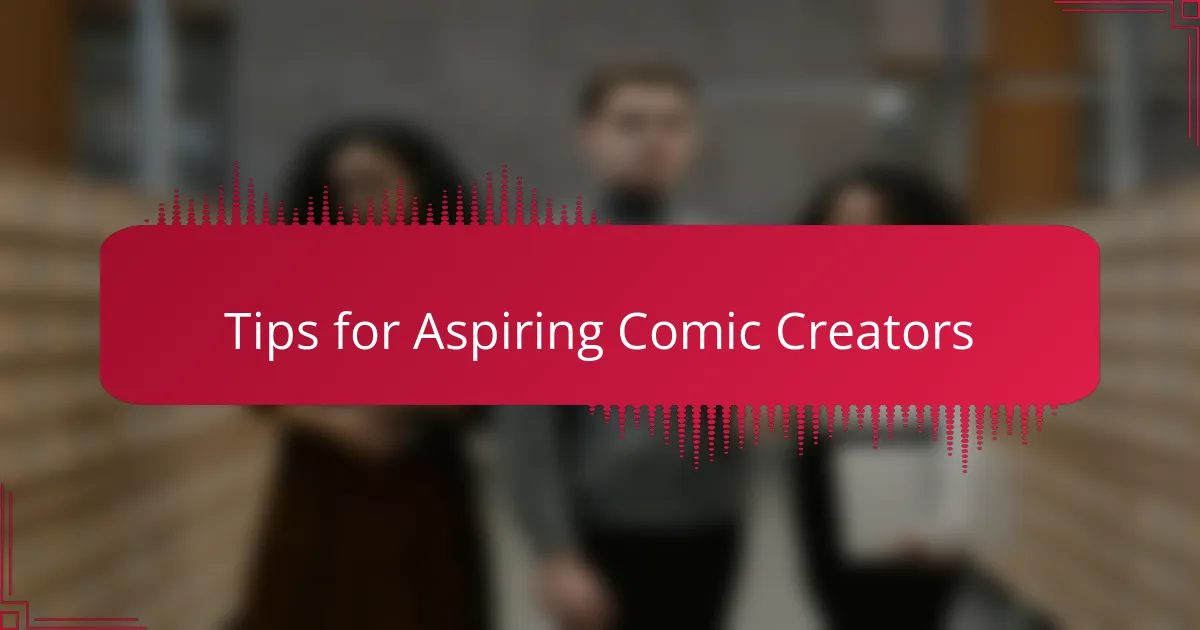
Tips for Aspiring Comic Creators
As an aspiring comic creator, I often found that developing relatable characters is crucial. I remember my early days, struggling with character depth. I discovered that giving my characters personal flaws and relatable ambitions made their journeys more engaging. Each character I created reflected bits of my own experiences, adding emotional layers that resonated with readers.
One of the most valuable lessons I learned is to draw inspiration from real life. Real emotions and situations provide a wealth of material for character development. Here are some tips that helped me along the way:
- Embrace Imperfection: Characters with flaws feel more authentic and relatable.
- Create Backstories: Understanding a character’s past can shape their motivations and reactions.
- Use Visual Design: Character Designer can help create unique looks that reflect the character’s personality.
- Experiment with Dialogue: Different speech patterns can make characters memorable.
- Seek Feedback: Share your characters with others to gain fresh perspectives and insights.
